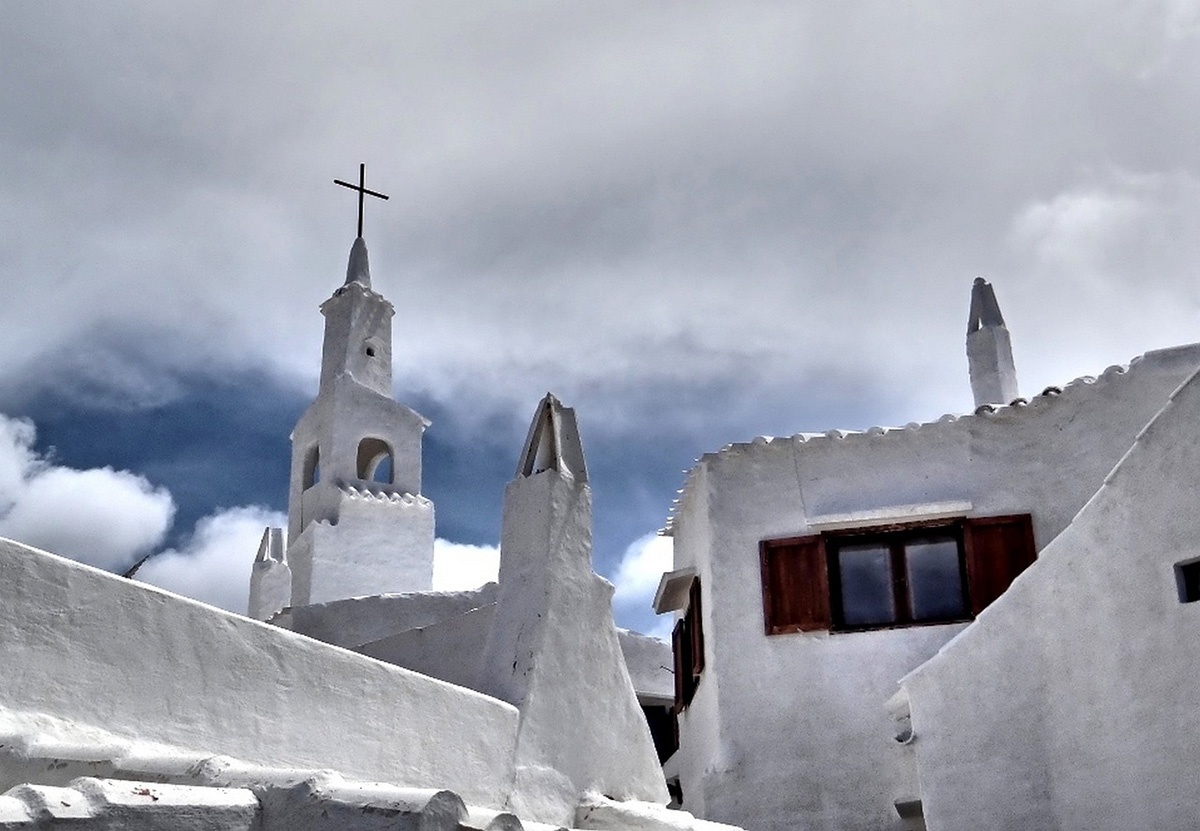In the realm of luxury, Marbella is often considered the epitome. Its sun-soaked beaches and high-end resorts are a traveller’s dream. But if you venture beyond the mainland, Spain’s Balearic Islands offer an immersive escape that’s also unmatched. Comprising Mallorca, Menorca, Ibiza, and Formentera, each island combines unique historical roots with mesmerizing beauty. For those lucky enough to live in Marbella, a weekend getaway to the Balearics is quick and easy and makes the perfect escape.

Mallorca: The Crown Jewel of the Balearics
Nestled in the heart of the Mediterranean, Mallorca’s landscape is a picturesque blend of rolling mountains, azure coastlines, and rustic villages. Its history is just as profound. Palma’s Almudaina Palace and Bellver Castle echo tales of medieval kings. The island’s Roman legacy is evidenced by the ruins at Pollentia in Alcúdia. Yet, it was the 19th century when Mallorca became a haven for artists and writers. Frédéric Chopin’s winter sojourn with George Sand in Valldemossa turned the village into a cultural hotspot. Today, you can visit the former Carthusian monastery where Chopin composed and Sand penned “A Winter in Majorca”. Beyond its historical allure, Mallorca is a paradise for hikers with its UNESCO World Heritage site, the Serra de Tramuntana mountain range, offering panoramic vistas at every turn.

Menorca: The Island of Serene Wonders
Menorca’s allure lies in its tranquility and rich heritage. The island boasts more beaches than all other Balearic islands combined. Cala Mitjana and Cala Macarella shimmer with turquoise waters, and the fishing village of Fornells is known for its lobster stews. But it’s the history of Menorca that truly fascinates. The island’s Talayotic culture is a window into prehistoric times, with ancient stone monuments like the Naveta d’Es Tudons testifying to a rich history. Menorca’s colonial past is evident in its Georgian-style architecture, a remnant from its brief British rule. The island’s capital, Mahón, houses one of the world’s deepest natural harbours and is adorned with elegant mansions and a historic military fort.

Ibiza: A Tapestry of Rhythms and Revelations
While Ibiza’s nightlife is legendary, it’s a mere facet of this multifaceted island. Ibiza has been a melting pot of cultures – from Phoenicians to Romans to Moors. The fortified old town, Dalt Vila, is a UNESCO World Heritage site and a testament to its storied past. Its cobbled streets house ancient chapels, like the Chapel of San Ciriaco, where, according to legend, the Catalan forces entered to reclaim the island from the Moors. Beyond its night clubs, Ibiza’s northern regions, with pine forests, olive groves, and traditional fincas, offer a tranquil respite.

Formentera: The Mediterranean’s Best-Kept Secret
Formentera is a testament to unspoiled beauty. Often overshadowed by its larger neighbours, it remains a pristine paradise. The island’s beaches, such as Playa de Ses Illetes, rival the Caribbean with powdery sands and clear waters. History lovers will appreciate the megalithic stone structures pointing to early Bronze Age settlers. The island’s iconic lighthouses, like the one at La Mola, inspired author Jules Verne’s “Hector Servadac”.

Organising Island Travel: The Essentials
Traveling between Spain’s islands is an adventure in itself, and some meticulous planning can enhance the experience manifold. Here are some factors to consider:
Mode of Travel: While flying is the quickest way, ferries between the Balearic Islands offer scenic routes and can be a more sustainable travel choice. For those with a penchant for luxury, private yacht charters can also be explored.
Peak Seasons: The islands, especially Ibiza and Mallorca, see a surge in tourists during summer. For a more peaceful experience, consider traveling during the shoulder seasons of spring or autumn.
Festivals: The Balearic Islands are renowned for their lively festivals. One of the must-experience events is ‘Sant Joan’ in Menorca, a horse festival held in Ciutadella in late June. Here, locals dress up in traditional attire and perform spectacular stunts on horses through crowded streets. Over in Ibiza, ‘Eivissa Medieval’ transforms the old town into a medieval marketplace for a few days every May, celebrating its history with art, music, and food from the era. Participating in, or even just witnessing, these festivals offers a rich insight into the island’s heritage and traditions.

Siesta Time: Recognize and respect the tradition of ‘siesta’ – a midday break that can last from around 2 pm to 5 pm. While major tourist zones remain active, many local shops and restaurants may close, especially in smaller towns.
Local Transportation: While major islands have robust public transportation, smaller islands might require renting scooters, bicycles, or cars. Researching in advance can save time and help in exploring off-the-beaten-path locations.
Sustainable Travel: The fragile ecosystems of islands require respect and care. Opt for eco-friendly accommodations, reduce plastic usage, and engage in responsible tourism practices to ensure these islands remain pristine for future generations.
Conservation: The local customs and traditions of the islands are deeply interwoven with nature. Whether it’s the olive groves of Mallorca or the protected marine ecosystems of Formentera, respecting nature is a part of respecting the culture. Stick to marked trails when hiking, refrain from picking plants, and always avoid disturbing local wildlife.

These islands are a mosaic of history, culture, and unparalleled scenic beauty. From Mallorca’s mountainous terrains and Menorca’s pristine beaches to Ibiza’s vibrant rhythms and Formentera’s untouched allure, there’s an endless expanse to explore. For travellers looking beyond the known, the Balearic Islands beckon with stories that span millennia and landscapes that capture the heart.



































































